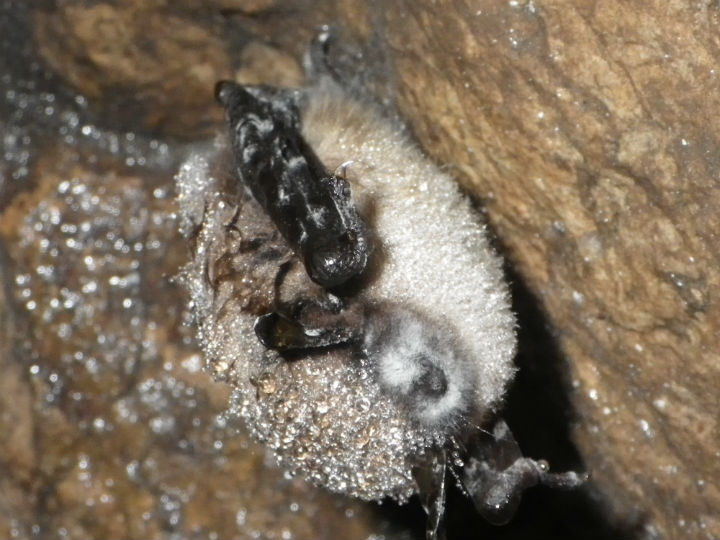A deadly infection known as white-nose syndrome has wiped out millions of bats across five provinces and 28 states. But now the disease has shown up for the first time on the other side of the continent, within flying distance of British Columbia.

Scientists are keeping a close eye on the region’s bat population now that the presence of the disease was confirmed in Kings County, Washington on March 31.
Hikers found a sick bat along a trail in the Cascade mountains, outside Seattle and brought it to an animal hospital, where it died two days later, according to Jefferson Public Radio.
The discovery of a bat infected with the fungus in Washington is the closest white-nose syndrome has made it to British Columbia, roughly 120 kilometres to the north of where the infected bat was found. Thus far, the disease hasn’t been found west of Ontario and there are no known cases in B.C. — yet.
“Some biologists are worried that it’s already present in British Columbia. We just haven’t detected it yet,” said Karen Vanderwolf, a biologist with the Canadian Wildlife Federation.
How serious is white-nose syndrome?
It’s very serious, said Vanderwolf. She saw firsthand the devastation white-nose syndrome can cause to bat populations while working in New Brunswick.
In one cave near Moncton, N.B., for example, the disease was to blame for wiping out 80 to 90 per cent of a colony of about 6,000 bats in the winter of 2011. By 2012 — just six years after the first cases were detected — researchers estimated the disease wiped out nearly 7 million cave-dwelling bats in Canada and the U.S.
READ MORE: Public asked to help track diseased bats this winter in New Brunswick
Vanderwolf pointed out there are about 46 different species of bats in North America, but only seven get affected by white-nose syndrome.
“With this new epicentre out West, this is really concerning because a lot of the bat species diversity is out West,” she said. “So, we’re not quite certain how these Western bat species are going to react to this disease.”
(Map via whitenosesyndrome.org)
What’s the ripple effect of so many bats dying?
Bats eat a lot of bugs. Eating thousands of small bugs a night, they are invaluable for pest control. The British Columbia government values the savings that pest control bats provide to be in the millions of dollars.
READ MORE: White-nose syndrome threatening bats across Canada
How did white-nose syndrome travel so far west?
It’s possible that humans are to blame.
Vanderwolf said the fungus could be picked up on shoes and caving equipment and transported to other caves.
Humans can transport white-nose syndrome, but can they catch it? What about pets?
Neither humans nor household pets can catch the disease.
Bats catch the fungus in caves when they’ve lowered their body temperature — during hibernation in winter. Bats that travel south to warmer areas during the winter months aren’t affected.
So, how does white-nose syndrome kill bats?
The fungus spores show up on bats’ noses, which is how the disease got its name, but it can actually cover other parts of their bodies and penetrates into skin.
What can be done to help stop the spread of white-nose syndrome?
Stay out of bat caves, especially in winter, said Vanderwolf. Or, at the very least, make the effort to decontaminate your shoes and equipment before exploring a new cave.
The Canadian Wildlife Health Cooperative released a video last fall showing how to decontaminate your equipment to prevent the spread of the fungus.
As far as any sort of treatment is concerned, Vanderwolf said that comes with its own concerns.
“If we come up with a treatment to implement in the field without doing damage to the greater ecosystem because you’re worried about introducing a new substance into the caving system,” she explained, adding it would also be difficult to treat every cave on the continent.
What should you do if you find a bat you think is sick?
Vanderwolf said it’s imperative to report it to local wildlife authorities or conservation groups, but she advises not handling it with your bare hands (well, that goes for any bat anytime).







Comments